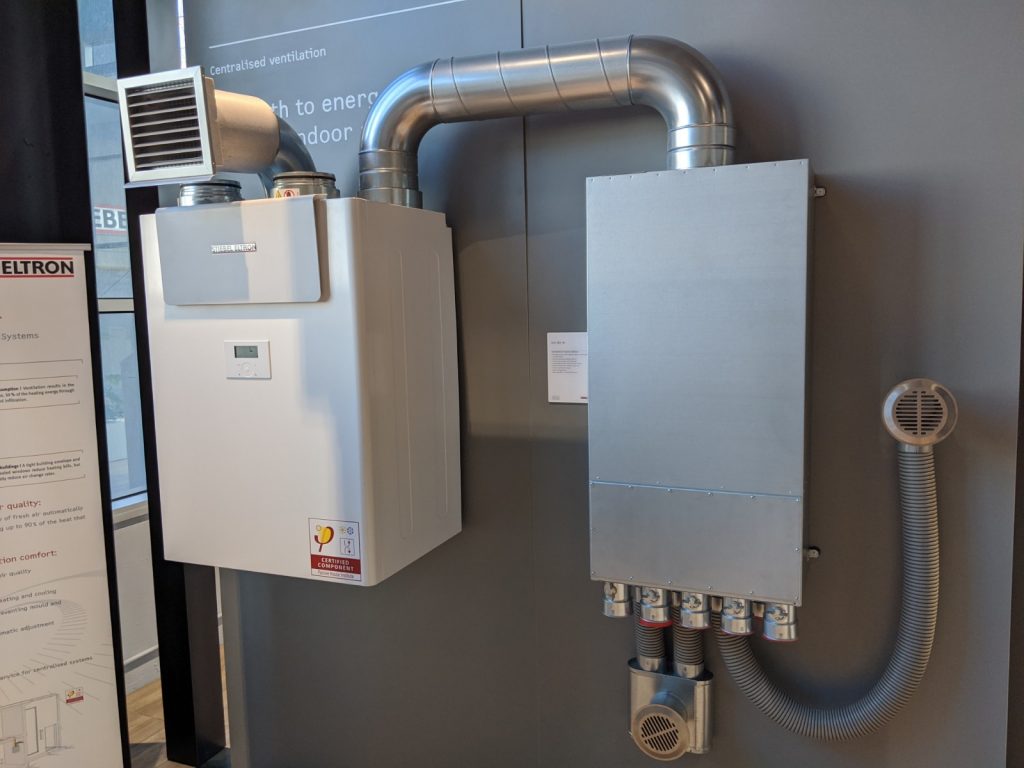Expert Tips to Maximize HRV Performance
Wiki Article
The All-Inclusive Guide to the Uses of Heat Recovery Ventilation in Modern Buildings
Heat Recovery Ventilation (HRV) systems stand for a considerable improvement in building technology (HRV Heat Recovery Ventilation). They provide an approach for trading stale indoor air with fresh exterior air while decreasing energy loss. This strategy not only enhances interior air quality yet likewise adds to energy performance in both residential and business structures. Comprehending the various applications and advantages of HRV can expose its critical function in modern-day design and sustainability efforts. The effects of this technology are worth discovering even moreRecognizing Heat Recovery Ventilation Systems

Many contemporary buildings prioritize power efficiency, comprehending warm healing air flow (HRV) systems is vital for optimizing interior air top quality and minimizing power consumption. HRV systems work by transferring heat from stagnant indoor air to incoming fresh air, successfully maintaining comfortable interior temperatures while lessening power loss. These systems contain a warmth exchanger, followers, and ductwork that facilitate the flow of air. Throughout winter, HRV units catch and recycle warmth from the outgoing air, while in summertime, they can help cool incoming air. By continuously exchanging air, HRV systems likewise decrease humidity and the concentration of interior toxins. Appropriate installation and maintenance of HRV systems are vital for their performance and performance in enhancing overall building efficiency and convenience.
Advantages of Heat Recovery Ventilation
Heat recovery ventilation systems use many advantages that improve both energy efficiency and indoor air quality in modern-day structures. By recording and reusing power from exhaust air, these systems substantially decrease heating & cooling costs, bring about lower power consumption. In addition, they preserve a stable flow of fresh exterior air, lessening the risk of indoor air toxins and irritants. This continuous exchange helps regulate moisture degrees, avoiding mold development and guaranteeing a healthier living environment. In addition, HRV systems add to sustainability objectives by decreasing general carbon impacts. Their capability to enhance air flow without giving up thermal convenience makes them a useful addition to modern structure layout, promoting both economic and environmental advantages.Applications of HRV in Residential Structures
As property owners progressively focus on power performance and interior air quality, the applications of heat healing air flow (HRV) systems in household structures have actually come to be more prevalent. HRV systems are especially valuable in tightly sealed homes, where keeping fresh HRV Heat Recovery Ventilation air blood circulation is necessary for preventing wetness build-up and interior pollutants. They successfully transfer warm from outward bound stale air to incoming fresh air, reducing power costs related to home heating and cooling. Additionally, HRVs can boost comfort degrees by managing humidity and temperature level. They are also adaptable for various domestic designs, consisting of single-family homes and multi-unit buildings. In general, incorporating HRV systems sustains lasting living techniques while ensuring a much healthier interior setting for owners.HRV in Business and Commercial Setups
In commercial and commercial settings, the execution of warmth recuperation air flow (HRV) systems has actually ended up being significantly essential for enhancing power effectiveness and preserving air quality. These systems properly move warmth from exhaust air to incoming fresh air, decreasing the demand for extra home heating or cooling. This not only reduces power costs but additionally adds to sustainability efforts. Industries such as production, warehousing, and workplace buildings profit significantly from HRV systems, as they help control temperature and moisture levels, making sure a comfortable and productive setting. HRV systems help in eliminating contaminants and excess moisture, enhancing interior air high quality. As policies around air quality become more stringent, the fostering of HRV innovation is likely to expand, making it a crucial component of modern-day business and commercial facilities.Future Trends in Heat Recovery Ventilation Technology

Frequently Asked Questions
Exactly How Does Heat Recovery Ventilation Impact Indoor Air Top Quality?
Heat recovery ventilation substantially boosts indoor air quality by continually exchanging stale interior air with fresh outside air while recovering power. This procedure decreases pollutants, maintains optimal moisture degrees, and ensures a much healthier atmosphere for passengers.Can HRV Systems Be Installed in Existing Buildings?
HRV systems can indeed be mounted in existing structures. Retrofitting might call for adjustments to ductwork and ventilation layouts, yet it substantially boosts energy efficiency and interior air top quality, making it a feasible choice for older structures.What Maintenance Is Required for HRV Equipments?

Are There Particular Climates Where HRV Is A Lot More Reliable?
Heat recovery ventilation systems are specifically reliable in environments with substantial temperature level distinctions between periods. These systems optimize energy efficiency by recuperating warmth from exhaust air, making them perfect for both cool and reasonably warm environments.Just How Do HRV Systems Affect Power Expenses?

Report this wiki page